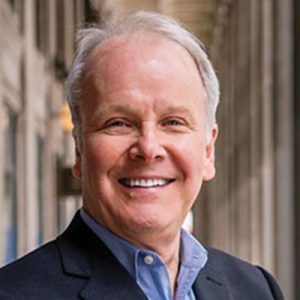The planning and selection of one or more retirement programs for a self-employed individual should be done in such a way that they establish meaningful holdings in three types of accounts: pre-tax, after-tax, and tax-free.
They come to us for business advice, so why not retirement advice? As the number of entrepreneurs grows, CPA
firms can grow with them by providing needed personal financial planning advice.
There are about 16 million workers in the United States who consider themselves to be self-employed now, up from around 13 million in mid-2020, according to the Pew Research Center. While the COVID-19 pandemic primed this growth, both in a positive sense (perhaps the “Great Resignation” lit a fire under the feet of would-be entrepreneurs) and in a negative sense (as businesses let go of thousands of W-2 employees), I believe we’ve entered a period of permanently high entrepreneurship moving forward, even as the economy recovers from its pandemic ills. But what of the retirements of these go-getters? How many employer-sponsored retirement accounts have they left behind, and how much of their personal savings has gone into starting their new ventures?
I’ve often felt that we CPAs and CPA personal financial planners can make the most impact in the lives of the self-employed and small business owners—and now we have a bigger market than ever to serve. So, how can we as strategic advisors ensure these entrepreneurs meet their long-term financial goals?
Assuming that your self-employed clients are already well on their way to covering the basics—think the proper legal and tax structures for their businesses, sound budgeting and cash flow management, and risk management (like business/liability and long-term disability insurance)—you should reinforce the benefits of retirement planning.
There are five primary retirement programs available to the self-employed: IRAs, SEP-IRAs, SIMPLE IRAs, solo 401(k) plans, and defined benefit pension plans. Each of these vehicles has different mechanics, pros, and cons to consider. Here are some basics to take into consideration when discussing them with your clients.
Flexibility Needs
The planning and selection of one or more retirement programs for a self-employed individual should be done in such a way that they establish meaningful holdings in three types of accounts: pre-tax, after-tax, and tax-free. The goal here is to create financial flexibility for when the time comes to utilize these assets, whether that be for living expenses or another venture.
The simple fact is that our tax and financial planning opportunities are greatest when clients have these three pools of assets to access. For example, you might recommend a withdrawal of pre-tax funds in excess of your client’s required minimum distribution (RMD) if the excess amount “fills up” their current marginal tax bracket, therefore reducing the likelihood that those funds will be taxed at a higher rate in the future.
Of course, the further goal of maximizing tax-free and after-tax assets often carries with it the cost of higher current income tax liabilities, which is why it’s important to strike a balance that works for each client and minimizes their current and future tax consequences. I personally like to set up my clients’ holdings so that their pre-tax RMDs are minimized, while their after-tax and tax-free assets are positioned to grow substantially.
Financial Expectations
For some self-employed individuals, retirement account assets become the lion’s share of the financial resources available to them in retirement. For others, not so much. Understanding how significant the anticipated value of a client’s retirement assets will be, and how they’ll play into their overall personal financial goals and well-being, will undoubtedly affect your retirement planning recommendations. For example, a self-employed individual whose
retirement will largely be funded by qualified plans and IRAs may require the relatively larger contributions permitted by a solo 401(k) or defined benefit pension plan. On the other hand, a business owner who plans to meet their retirement living expenses largely through the sale or public offering of their business may very well benefit from more modest programs, like IRAs and SIMPLE IRAs. Of note, always be sure to consider a client’s actual and projected pension benefits (if any), Social Security benefits, and spousal assets when developing your recommendations for self-employed
retirement programs.
Asset Allocations
Lately, we’ve seen almost daily how growth and technology stocks outperform value stocks and then the next trading day the opposite is true. The stock and bond market volatility we’ve witnessed throughout 2022 simply reinforces my belief in the practice of building a diversified investment portfolio with allocations across a mix of domestic and international equities, fixed income, real estate, commodities, private equity, and more.
However, asset location, as much as asset allocation, is a significant part of the tax planning strategy for your clients. It’s important to practice minimizing income taxes by strategically placing specific investment assets into pre-tax, after-tax, and tax-free vehicles. This could be as simple as determining to hold municipal bonds in after-tax accounts and corporate bonds in pre-tax accounts. You could also be more nuanced by guiding your clients to hold low-cost index
funds in after-tax accounts and actively managed investment funds in pre-tax accounts.
The point here is that helping your clients allocate funds to not only the right investments for their risk tolerance and financial needs, but also into the right vehicles to maximize the tax benefits of each of those types of investments, is a great opportunity to bring added value to your clients. And the beauty of the investment marketplace today is that there’s almost certainly a tax-efficient vehicle for every asset class we’d likely recommend.
Distribution Rules
Starting in the 2022 tax year, IRAs and other qualified plans will utilize a new set of life expectancy tables for account owners and beneficiaries to follow when calculating their RMDs. These tables replace the ones in use since the early 2000s, and reflect our increasing life expectancies, therefore resulting in smaller RMDs (anywhere from about 1% to about 8% between ages 72 and 102).
While other distribution rules changes are largely designed to encourage withdrawals from qualified plans and IRAs as early as age 59½ until the first RMD (in most cases at age 72), it’s important to remember there are meaningful exceptions. For example, qualified plan assets can be withdrawn as early as age 55 with no penalty by former employees who separated from service with the employer sponsor of the plan. In addition, section 72(t) of the Internal Revenue Code permits penalty-free withdrawals from IRAs at any age as long as the payments to the IRA holder are substantially equal and continue for the longer of either five years or the period of time from the first withdrawal until the account
owner turns 59½. These exceptions to the typical age 59½ withdrawal requirement can provide almost any account holder with added financial flexibility for anything from emergencies to full-blown retirement income.
As the number of entrepreneurs grows across the country, I see a growing opportunity for CPAs to enhance their offerings while adding more value by providing self-employed clients with the long-term business, tax, and retirement planning strategies they need to succeed both in business and life.
Mark J. Gilbert, CPA/PFS, MBA, is president of Reason Financial Advisors in Naperville, Ill., and is the personal financial
planning columnist for Insight (icpas.org/insight), the magazine of the Illinois CPA Society. You may contact him at
(630) 807-9009 or mgilbert@reasonfinancial.com.
This article is reprinted courtesy of the Illinois CPA Society.







